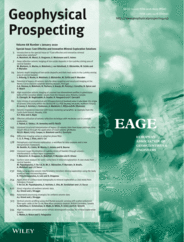-
f Effective utilization of seismic reflection technique with moderate cost in uranium exploration
- Source: Geophysical Prospecting, Volume 68, Issue 1 - Cost‐Effective and Innovative Mineral Exploration Solutions, Jan 2020, p. 129 - 144
-
- 08 Mar 2019
- 05 Nov 2019
- 30 Dec 2019
Abstract
In participation with numerous industrial partners, the Seismic Laboratory of the University of Saskatchewan has conducted a variety of active seismic reflection experiments; both on the west and east sides of the Athabasca Basin. Results of the investigations at Shea Creek, McArthur River and Keefe Lake illustrate that the seismic investigations deliver effective, highly relevant primary structural images of the subsurface, with resolution that no other geophysical technique can match. Correlation of similar seismic signatures, on several distant but inter‐related seismic sections, allowed spatial extension of promising exploration target zones previously unrecognized. Within the three‐dimensional seismic volume, comparable reflectivity patterns defined the complex areal distribution of mineralization‐related fault systems. Beyond these novel contributions, extended analysis of seismic signal attributes (amplitude and frequency), optical televiewer, and full‐wave sonic data offer detailed lithological characterization, including alteration zones, clay content, as well as porosity and fracture density information. Although these structural and geologically relevant anomalies are primary indicators of mineralization, presenting novel exploration advantages, the seismic method is still not a standard component of the Athabasca Basin exploration approach, due to the negative perception that ‘it is very expensive’. Comparing the costs of all geophysical techniques to the cost of a single logged drill hole illustrates that the results of a properly designed seismic data acquisition program not only leads to more effective planning of a drilling program, but also would lead to a much quicker recognition of the major mineralized zone(s), and a reduction in the number of required exploration boreholes. This integrated approach to exploration would then translate into a significant reduction of the total exploration expenditures. Unquestionably, the drilling of boreholes provides the most explicit, reliable information to a certain depth, but only within a very small area. Directly connecting the borehole information to seismic results extends the local reliable data; permitting reduction of the number of boreholes to create accurate two‐dimensional or three‐dimensional subsurface images and reduction of the expenditures of the total exploration program.




